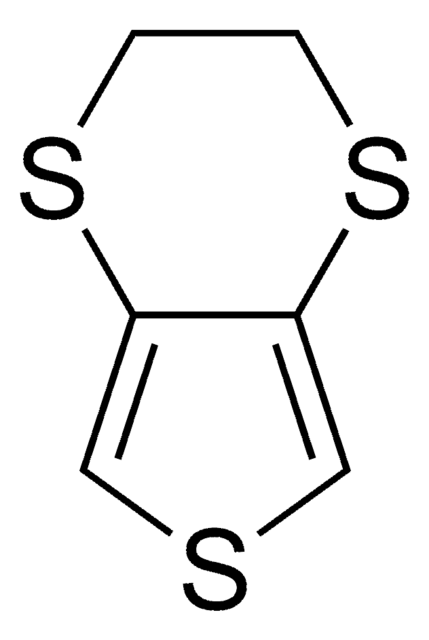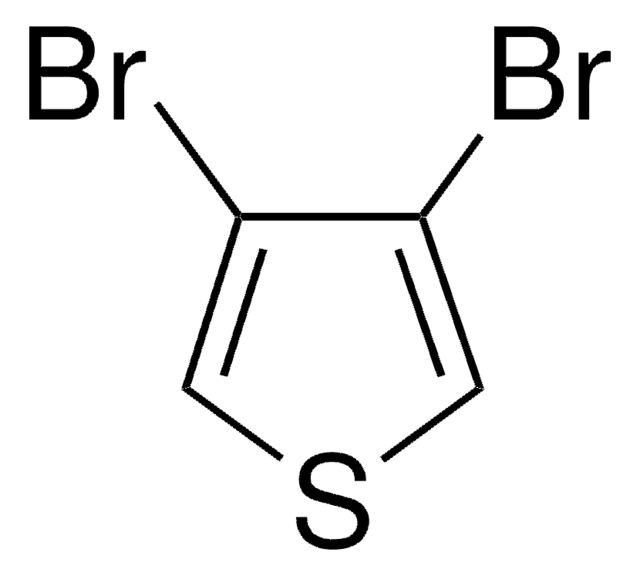660485
3,4-Propylenedioxythiophene
97%
Sinónimos:
3,4-Dihydro-2H-thieno[3,4-b][1,4]dioxepin, ProDOT
Seleccione un Tamaño
Seleccione un Tamaño
About This Item
Productos recomendados
Nivel de calidad
Ensayo
97%
Formulario
solid
mp
79-83 °C
cadena SMILES
C1COc2cscc2OC1
InChI
1S/C7H8O2S/c1-2-8-6-4-10-5-7(6)9-3-1/h4-5H,1-3H2
Clave InChI
WNOOCRQGKGWSJE-UHFFFAOYSA-N
Categorías relacionadas
Descripción general
Código de clase de almacenamiento
11 - Combustible Solids
Clase de riesgo para el agua (WGK)
WGK 3
Punto de inflamabilidad (°F)
Not applicable
Punto de inflamabilidad (°C)
Not applicable
Equipo de protección personal
Eyeshields, Gloves, type N95 (US)
Elija entre una de las versiones más recientes:
¿Ya tiene este producto?
Encuentre la documentación para los productos que ha comprado recientemente en la Biblioteca de documentos.
Los clientes también vieron
Artículos
Conjugated polymers offer charge transport between inorganic, electrically conducting metals and organic, proton-conducting biological systems.
Active Filters
Nuestro equipo de científicos tiene experiencia en todas las áreas de investigación: Ciencias de la vida, Ciencia de los materiales, Síntesis química, Cromatografía, Analítica y muchas otras.
Póngase en contacto con el Servicio técnico











